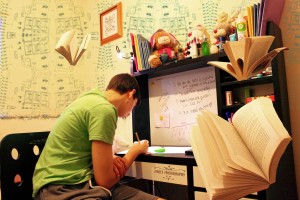Standardized Testing: A Parent’s Guide
Whether a proponent of the practice or not, standardized testing is a certain reality for parents, students, and teachers in America’s public educational system. While both sides of the long-held debate argue vehemently for the continued use or abolishment of such high-stakes assessments, one thing is certain—our children, teachers, administrators, and schools will be measured by standardized tests. Aside from exercising your parental right to “opt out” of such state mandated assessments, which thousands of families have decided to do in recent years, what can parents do to ease the inevitable stress associated with these high-stakes tests?
Well, depending on your child’s age and learning circumstances, the conversations surrounding standardized testing will vary. For children and teens with testing anxiety or other learning difficulties, it is most important to put your child at ease. As a parent, the last thing that you want to witness is your child’s worry or discomfort.
When testing becomes a part of the school year, allow your child to steer the conversation. Answer their questions honestly and validate their concerns. Yes, these tests matter; no, these tests do not define your abilities. Discuss how such assessments are just one measure of some of the things that they have learned this year. Explain to your child that the importance of an assessment is to acknowledge what they know—not necessarily to focus on what they do not know. Keeping the focus on the positive helps to reduce test anxiety and ease the worry of answering incorrectly. Remind your child that his strengths far exceed the measures of such exams.
For the “perfectionist” child, standardized tests can be a rather hefty focus. Even if parents minimize the importance of these assessments, the perfectionist will seek success. Children who are used to doing well will inevitably put pressure on themselves when completing an assessment such as this. In this case, provide your “high flyer” with test-taking strategies. These tips not only assist during the test, but they also provide your child with the confidence they need to alleviate some of the pressure associated with acing the exam.
- For reading comprehension sections, encourage your child to read the questions prior to the excerpt. This will prepare students as they read, and help them to be aware of what to look for in the text. Reading the questions prior to the excerpt is also a method to save time. When students know what they are looking for, they are able to work through the text or excerpt more efficiently.
- Tell your child to mark, then skip, questions that are confusing. Remind them that they can always go back and select an answer later on in the testing session. But to focus on a confusing question for too long will not only waste time, it will also cause frustration and stress.
- Remind your child to read each question carefully, being sure to understand what is being asked before seeking the answer. Often times, in an effort to save time, students may rush through the questions and choose the initial gut response. Remind them to read questions carefully and completely.
- When in doubt, remind your child to use the “process of elimination” method. Especially when questions are more confusing than others, encourage children to cross off answer options that they know cannot be correct. Then, when necessary, take an educated guess from the remaining options.













